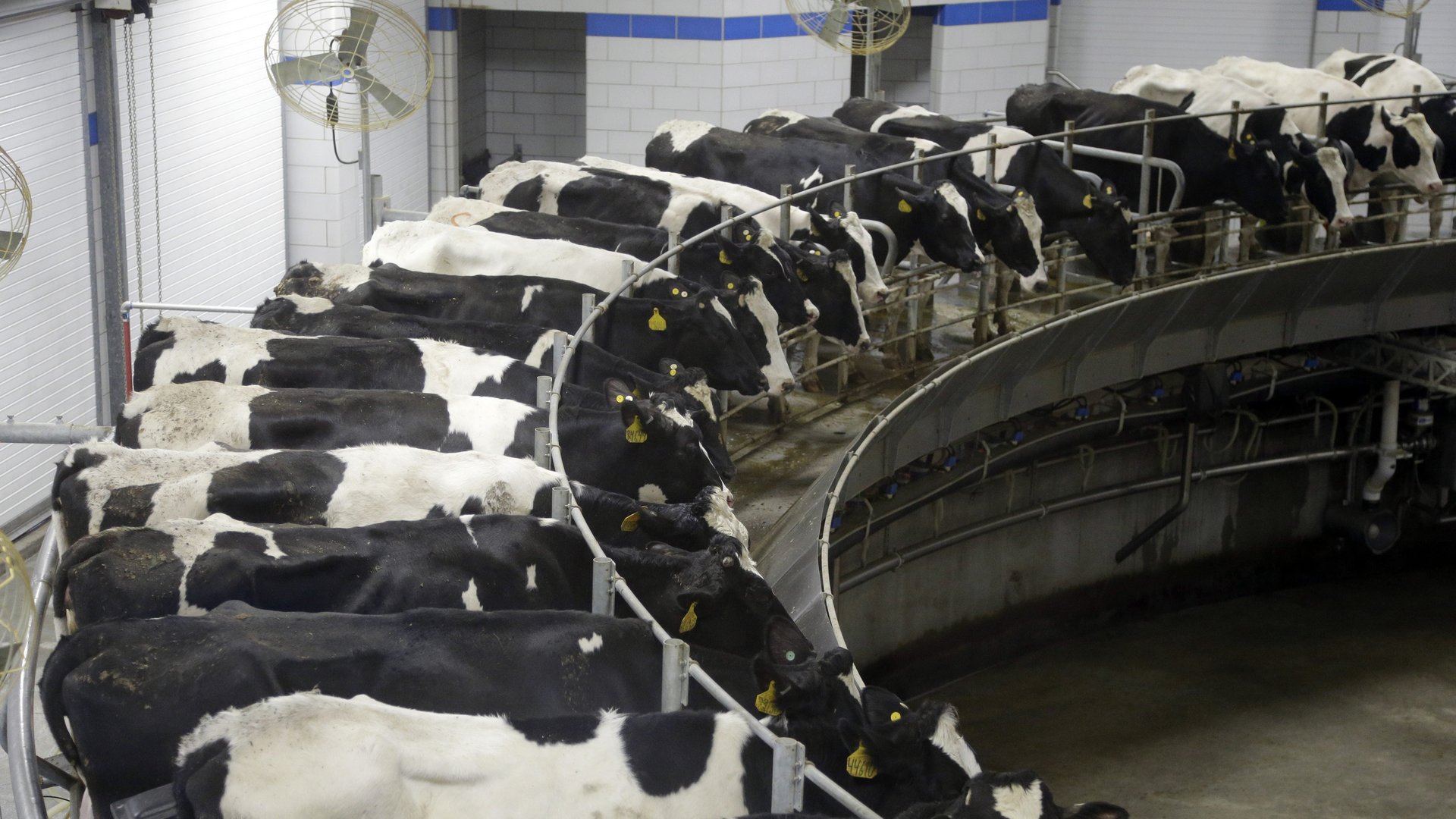Lactose-free milk is driving sales for the struggling dairy industry
With coffee shops and restaurants around the US closed due to the coronavirus pandemic, some American diary farms have resorted to dumping milk to prevent an oversupply. Producers who make lactose-free milk are seeing fewer disruptions to business. Lactose-free milk is distinctly different than milk alternatives made of soy, almond, or oat. It’s from a cow and, like its plant-based competitors, sales are on the rise.


With coffee shops and restaurants around the US closed due to the coronavirus pandemic, some American diary farms have resorted to dumping milk to prevent an oversupply. Producers who make lactose-free milk are seeing fewer disruptions to business. Lactose-free milk is distinctly different than milk alternatives made of soy, almond, or oat. It’s from a cow and, like its plant-based competitors, sales are on the rise.
Last year set records for lactose-free milk and the companies that produce lactase—the enzyme that turns regular milk lactose-free. Industry analyst, Technavio, estimates a global expansion of $118 million over the next three years, with North American dairy producers leading the demand followed by European and Asian markets. Nielsen says $1.2 billion of lactose-free milk is sold in grocery stores annually.
Producing lactose-free milk relies on mixing lactase with milk.
Lactose-free producers have been significantly less affected by the economic downturn and government-mandated changes to behaviors because lactose-free milk is predominantly sold to consumers at grocery stores. Shopping for food is one of the few activities Americans in many cities are allowed to do as officials try to slow infections. Eating out at restaurants and picking up coffee at cafés is generally forbidden.
Sales of lactose-free milk was $126 million in March, up 30% from 2019, according to Nielsen. “Part of this is due to a return to comfort food and recessionary habits,” says Matt Gould, the editor of a dairy-industry newsletter, “where dairy has struggled is at restaurants which are nearly all shuttered.” About 40% of traditional US milk sales are at restaurants and other food-service businesses, according to HighGround Dairy, a futures and options broker focused on the dairy market.
Over the past few years, there has been enough consumer demand for lactose-free milk, “we just didn’t have the product available,” according to Alyssa Badger the director of global operations at HighGround. For years, Lactaid was the only widely available lactose-free milk on store shelves in North America. Now, they are one of many available to consumers.
To be sure, the dairy industry is fluctuating as a response to the increased globalization of its products over the last 100 years. For the majority of the 20th century, dairy was a highly-localized business. Advances in shipping, refrigeration, and international trade have reshaped the industry to be more globally focused.
Changes in world markets has some businesses struggling to adapt. In the US, the largest milk company, Dean Foods Co. filed for Chapter 11 bankruptcy at the end of last year. They joined 48 other dairy companies to file bankruptcy in 2019. To a smaller degree, plant-based milk alternatives and the changing consumer taste that they cater to are challenging the industry as well.
The dairy industry responded with lactose-free milk to try to match the appeal of milks made from oats, cashews, bananas, almonds, and others.
According to dairy data from market researcher IRI, US sales by volume in lactose-free milk increased by 10.9% in 2019 compared to the prior year. The growth makes it the only dairy product to see such a gain with the exception of non-homogenized milk. White milk declined by 4% over the same period. Even compared to dairy alternatives, lactose-free performed better. Soy was down 12.8%, coconut down 4.6%, and almond up 7.6%. Brands that provide only lactose-free dairy, like Hood’s Lactaid and Fairlife, were the only to see growth among skim and low-fat varieties.
Given the straightforward process, taking a percentage of processed dairy and converting it to lactose-free is a simple choice for milk companies. Few additional costs, combined with consumer appetite makes it a winning solution.
In January, Coca-Cola took control of Fairlife—a 100% lactose-free dairy line—by buying out its partners. “While sales of traditional fluid milk have been declining, consumer interest in value-added dairy products” Fairlife CEO Tim Doelman said in a statement, “is on the rise.”
Meanwhile, Washington-state dairy company Dairygold is investing $67 million in a new facility in Boise, Idaho, dedicated to sole production of their lactose-free milk brand, called FIT. In addition to making dairy for the lactose intolerant, Dairygold says it’s targeting consumers looking to buy “better-for-you” products.
According to Matt Gould, “There’s a big consumer trend to avoid lactose, whether or not it’s backed by science.”